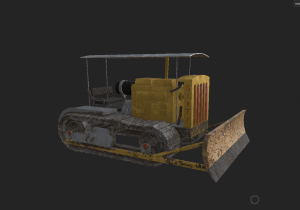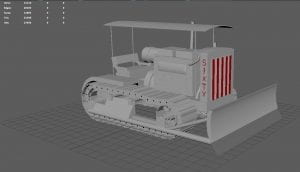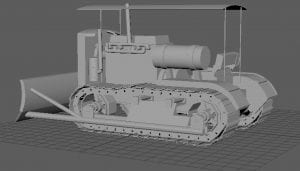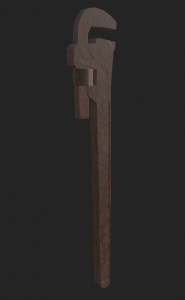Research in Animation & Game Arts
Reconstructing the History of the Hoover Dam for Cutting-Edge Pedagogical Purposes
By James Ristaino

James Ristaino is shown here helping users with the VR experience he helped
create along with a team of faculty and other student researchers.
§
My name is James Ristaino. I am a junior majoring in Animation & Game Arts here at the College of Visual and Performinf Arts at UMassD. For the past couple of years I have been a member of an interdisciplinary research team of faculty, graduate, and undergraduate students on a virtual reality (VR) educational game, which we like to call VR “serious game.” This team, which is consisted of a variety of experts from science, arts, humanities, and computer science, focuses on creating an immersive VR environment for Hoover Dam (https://vrhooverdam.com). Our immersive environment tells the story of the dam’s construction from the viewpoint of photographer Winthrop A. Davis, who moved to Las Vegas in the early 1930s to capture the dam’s construction process. A “serious” educational game, the project is focused on the history of the construction of what my group believes to be “one of the most iconic structures in the world.” We combine cutting edge-technologies with scholarship in the field of history to create what my group describes as “an interactive, 4-dimensional game that takes place within the landscape of the 1930s Black Canyon site where Hoover Dam was built.” The project is




 Work produced by James Ristaino for the NEH-funded, collaborative, and
Work produced by James Ristaino for the NEH-funded, collaborative, and
interdisciplinary research project on the Hoover Dam.
§
I have spent my time on this team as a 3D artist. I was given historic images as reference and was asked to replicate them in 3D. This process consists of importing references into the workspace, selecting a basic shape to begin with(like a cube, cylinder, or sphere), and working simply for as long as possible. Meaning, working in low-detail, then adding high-detail later on. Once the model is complete, then it will need to be UV mapped, which means creating a surface mesh for the textures to be placed. The models are then brought into programs like Substance painter and materials are assigned to those UV maps to achieve the desired texture. An example of my work is the 1930’s Sixty Dozer, with 3 different texture options so that they don’t all look the same throughout the Canyon. I also worked on the Rope and Chair Hoisting system that the High-Scalers used during construction of the Dam, the Wrench that the workers used, and also the employment badge. I used a combination of materials on these models, like rust or metal, and photos to make the items look realistic, like the employment badge.
§
I have enjoyed my experience with the research team so far. I believe that this extracurricular activity has shaped my current career in the arts as well as possibly the future direction of my career in the field. I am grateful for this NEH-funded research opportunity! It is also wonderful to be guided by professors and researchers in learning environments outside the classroom context. I am particularly thankful to professors Arrigo, Ahrens, and Kayumova.

